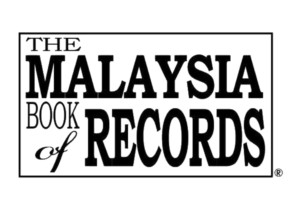Operation Hours
- Monday - Friday
- 9.00am - 6.00pm
- Saturday
- 9.00am - 3.00pm
Contact Us
- +60125252909
- ______________________
- Glojas Hair Clinic,
- Glomac Galleria,
- Sri Hartamas,
- Kuala Lumpur
We are Malaysia’s Pioneer One-Stop Hair Transplant Centre using the latest state of art technique in the field of Hair Transplant, with over 20 years in practice. We at Hair Transplant Centre in Malaysia deliver the best and proven solutions to restore your hair. The Pioneer of Hair Transplant in Malaysia is Prof. Dato’ Dr. JasG and holds more than 20 years of experience. Prof. Dato’ Dr. JasG is Malaysia’s Pioneer ABHRS Diplomat (American Board of Hair Restoration Surgery) and has a Fellowship from International Society of Hair Restoration Surgery (ISHRS). Prof. Dato’ Dr. JasG works closely with one of Malaysia’s Top Leading Plastic Surgeon, Dr. Mohd Ali who holds more than 15 years of experience. Prof. Dato Dr. JasG has perfected the FUE and FUT technique by developing and patenting innovation known as the SMART™ FUE and SMART™ FUT, and are ONLY available at Glojas Clinic. We are committed to deliver only the best results on par with world class standards.

We keep our cosmetic technologies up to date, and only use the best of the best for our patients. Providing top notch service using modern technique by our very own specialist, Professor Dato’ Dr. JasG.

We offer a professional and personal approach to each and every patient. Your satisfaction and best results is our ultimate aim.

We do what we do with passion and we take pride of it. As much as the results, we keep patients safety and patients comfort as our top most priority.
A Ghost Hair Transplant is where a hair transplant is carried out by an unqualified individual without the presence of a qualified surgeon. Ghost Hair Transplant is becoming increasingly popular around the world, and it is having a negative impact on many patients. Here are some important factors to look out for when getting a hair transplant surgery;
Our hair restoration treatments at Glojas are performed by medical professionals. They are highly trained specialists who will introduce you to all aspects of the hair transplant process, from time frames to finances and more. The purpose of a consultation is to provide you with information that will assist you in making the best decision for you. Our experts will assess your situation to determine your goals and your budget.
Dr. Mohd Ali developed a passion for plastic surgery at an early age, and specialises in plastic surgery with Universiti Sains Malaysia (USM). He is recognized and registered by the Ministry of Health (MOH) Malaysia and The National Specialist Register of Malaysia (NSR).
With the growing industry of plastic surgery and Dr. Mohd Ali’s years of experience, as well as his willingness and drive to learn and explore further in such an enthralling industry, he is only continuing to grow. He is eager to apply his skills and experience to his current role as plastic surgeon, where he will be providing expert advice and educational information, as well as initiating treatment plans in order to achieve patient goals.


Professor Dato’ Dr. Jasvinder Singh Gurbakhes was born on 8 April 1966 in Bedong, Kedah. With a compassionate heart, he aspired to become a doctor. He pursued an MBBS in Medicine and Surgery at Manipal, India, and rose through the ranks of a medical career and aesthetic medicine. He later specialised in hair restoration and hair transplant surgeries.
As a hair transplant specialist, Professor Dato’ Dr. Jasvinder Singh Gurbakhes specialises all types of hair transplants which includes for men, women as well as transgenders. Having practised for over 26 years, he has tackled thousands of cases, from mediocre to severe, and is an expert at repairing botched and failed hair transplant cases. Professor Dato’ Dr. Jasvinder Singh Gurbakhes ensures that every patient is treated for their individual needs and desires as every patient differs in issues and circumstances which demand a one-to-one tailored treatment or procedure in achieving successful
results.
What distinguishes us as the best is due to the fact that all of our surgeries are performed by our very own highly qualified doctors, Professor Dato’ Dr. JasG and Dr. Mohd Ali. Successful results are accomplished through our medical expertise, technique and technology, all of which adhere to stringent regulatory guidelines and medical practise demands of medical practices worldwide. Professor Dato’ Dr.JasG has perfected the FUE and FUT technique by developing and patenting innovation known as the SMART™ FUE and SMART™ FUT, and are ONLY available at Glojas Clinic.




We understand the complexity involved in this sensitive task. Therefore, we only recommend our clientele to go with natural solutions. By picking the hair follicles from the strongest donor area, we ensure a 100% natural solution. Our highly-trained & experienced surgeons follow the impeccable process of a beard transplant. Our primary objective is to provide a 100% natural solution that guarantees results. By implanting your own follicles, you get a natural & permanent body hair that grows as well.
Follicular Unit Excision (FUE) and Follicular Unit Transplantation (FUT) are the two methods used for hair transplant procedures. In a FUE procedure, hair follicles are extracted individually and transplanted to different locations on the scalp; in a FUT procedure, the scalp is removed in a long strip and the follicles are separated and planted. With the latest technology, Prof. Dato Dr. JasG has perfected the FUE and FUT technique by developing and patenting innovation known as the SMART™ FUE and SMART™ FUT, and are ONLY available at Glojas Clinic.




SMART™ FUE (Follicular Unit Excision) is a fast and effective treatment that helps you to overcome hair loss. Follicular Unit Excision is a minimally invasive procedure where folliciles are extracted from the back of the head which is known as the donor site and planted onto the balding area which is known as the recipient site. SMART is a combination of formulations and techniques that ensures quicker and successful results and is only available at Glojas. The SMART™ FUE procedure are such as:
SMART™ FUT (Follicular Unit Transplantation) uses a “strip method” that involves the removal of a long, thin piece of tissue from the back of the scalp. Stereo-microscopic dissection is then used to remove individual follicular units from the strip. The wound is closed after the follicles have been harvested, leaving a single, very fine linear scar. SMART is a combination of formulations and techniques that ensures quicker and successful results and is only available at Glojas. The SMART™ FUT procedure are such as:
The recovery process for SMART™ FUE technique will take around 7 to 10 days where most traces of scab from the grafts will be completely gone. 3 to 4 months onwards, you should notice significant hair growth, at which point your native and transplanted hair will continue to grow naturally.
The recovery process for SMART™ FUT technique will take a longer time to heal compared to the SMART™ FUE. Your linear scar will recover within 2 weeks, at which point your native and transplanted hair will continue to grow naturally.





Hair transplants can be performed on any individual with balding spot at the crown, good donor area hair, and good general health. Patients often come to Glojas for help with thinning scalp hair, treating a bald spot on the crown, and restoring a receding hairline, as well as thinning eyebrows, beards, or mustache.
Hair transplants procedure are such as:
Hair transplants procedure are such as:
A hair transplant should take between four to eight hours. Depending on your hair loss type, you may require multiple hair transplant sessions to achieve greater density and volume.
A 500-graft hair transplant would take about 2-3 hours from preparation to aftercare instructions.
In the case of 1,000-graft transplantation, the procedure takes approximately 5 hours. There is an interval of about an hour between the first and the second stage of the treatment procedure.
It can take six to twelve weeks for new hair to grow out of the transplanted area. Keep in mind that it is normal to lose hair from the surgical site; this helps make room in your hair follicles for new hair growth.
The shedding process will begin 2 weeks after the beard transplant procedure and may last up to 3 months. Optimum results can be observed 7 months to 8 months after the hair transplant procedure. Your beard will begin to gain coverage and by 9 months you will be able to grow a full beard.
The majority of patients see results six to nine months after surgery. It can take up to a year for some patients. It is critical to understand that the transplanted hair will fall out for the first 3 months, this is known as the shedding phase.
Medication protocol is suitable for all types of conditions related to hair. Since Alopecia Areata treatment is non-invasive, therefore taking the medication alone can help with hair growth without surgery involved. While other conditions need medication protocol after a transplant to maintain hair growth.
Medication protocol is suitable for all types of conditions related to hair. Since Alopecia Areata treatment is non-invasive, therefore taking the medication alone can help with hair growth without surgery involved. While other conditions need medication protocol after a transplant to maintain hair growth.
Understanding what causes unhealthy hair in the first place is the key to achieving healthy hair. Here are some steps to guide you on your hair transplant surgery: